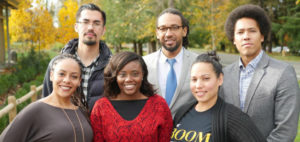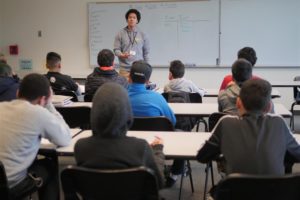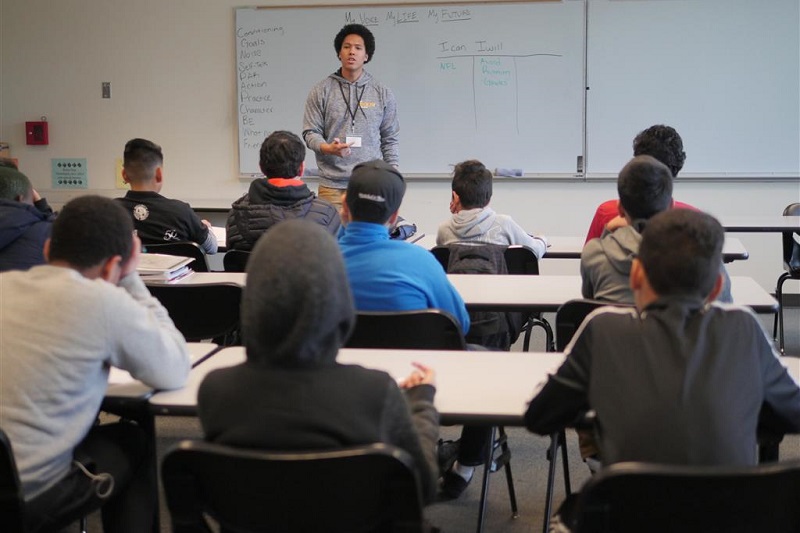At Eastside Pathways, as in communities nationally, our understanding of collective impact continues to evolve. One key change is the way that an explicit focus on equity has moved to the forefront.
In a widely-read update to their original 2011 white paper on collective impact, John Kania and Mark Kramer lay out The Equity Imperative in Collective Impact, arguing that the rationale for focusing on equity is “simple and straightforward, even intuitive, but not inevitable.” They write:
If participants in collective impact initiatives are to make the lasting change they seek, they must pay explicit attention to policies, practices, and culture that are reinforcing patterns of inequity in the community. They must develop targeted strategies that specifically and differentially take into account any underlying advantages that some people have, as well as disadvantages that other groups face. And throughout every aspect of the collective impact process, they must bring to the table those whose lives are affected by the results of the work.
Eastside Pathways as an organization has embarked on applying an equity lens to the work we are doing by establishing the Eastside Pathways Racial Equity Team (EPRET), which functions as a resource and support for Eastside Pathways in viewing all our work through an “equity lens,” challenging institutional racism, and promoting racial equity throughout our community.
EPRET is working with Eastside Pathways Partners to raise their racial equity consciousness through education, discussions, and community initiatives. For example, in 2016, they did deliberate work by modifying and sharing a racial equity assessment tool and hosting a communitywide conversation around the Kara Walker art exhibit to advance Bellevue’s racial equity understanding and comfort with the discomfort of courageous conversations. In the summer of 2017, EPRET will collaborate with the Bellevue School District’s Department of Equity to bring in the Pacific Educational Group for a local racial equity summit.
 The Bellevue School District (BSD) is an example of an organization working to put in place transformative equity practices. Under the direction of Shomari Jones, the Director of Equity, BSD has created equity teams (E-teams) at 28 different schools, has implemented various strategies to impact students, and has devoted resources to multiple trainings affecting the district’s entire staff. The purpose has been in making the organization more equitable – a place where “each and every student is served effectively to achieve at high levels.”
The Bellevue School District (BSD) is an example of an organization working to put in place transformative equity practices. Under the direction of Shomari Jones, the Director of Equity, BSD has created equity teams (E-teams) at 28 different schools, has implemented various strategies to impact students, and has devoted resources to multiple trainings affecting the district’s entire staff. The purpose has been in making the organization more equitable – a place where “each and every student is served effectively to achieve at high levels.”
E-Teams
The school E-teams are supported by equity specialists. The specialists serve as liaisons to leadership staff to identify goals and objectives for equity initiatives, support staff development through workshops or conferences, and serve on parent and community groups. The specialists also support students by making sure that they are served in culturally relevant and effective ways, facilitate the implementation of student affinity groups, and provide direct outreach to students of color to support 100% graduation and college readiness.
 Student Programs
Student Programs
The department has used student leadership programs like the BOOM (Breaking Out of the Margins) and SHOUT (Sistahs Having Outstanding Uniqueness Together) experience as a strategy to reach out to students. These programs provide an opportunity for students in middle and high school who identify as Latino, Black, Native American, or a mix of any these, to connect and find support, inspiration, and leadership in men and women with racial identities like theirs. The BOOM Experience is geared for male students and the SHOUT Experience is for females. In December 2016, the BOOM Experience was hosted for the second time at Bellevue College. With nearly 300 male students in attendance, it was a success. BSD will offer a similar opportunity for its female students in late March.
Staff Training
BSD staff is undergoing racial equity training with facilitation and curriculum from the Pacific Educational Group. These trainings involve culture and customs as well as policies and practices. In Jones’ estimation, the trainings have revealed a wide range of levels of experience and readiness in interrupting systemic racism within the district’s nearly 2,500 staff members. “With our aggressive strategies to provide tools and resources to our staff, we’ve seen monumental growth in identifying barriers for student success and engaging in courageous conversations,” Jones said. He already sees an impact rippling through the district, maybe not yet on measurable goals like graduation rates or attendance, but on individuals in leadership positions in schools. They are moving their work forward through an equitable lens.
Jones explains that all of the above have been intentional, if sometimes technical, steps meant “to inspire and prove that there is a need [for this work] and it is effective” in serving not only non-white students but all students across the board, through the raising of standards for everyone.* The work permeates every department, including the leadership Cabinet, and he is aware of the continued need for a deep, practical focus on racial equity across the board. As an example, the Department of Special Education is committed to using a racial equity lens to better serve all students with disabilities.
This has been a start for BSD and is setting the stage for getting much bigger, more intentional work done in the next ten years. While far from finished, it is a good example of the impact a commitment to equity can make.
Eastside Pathways is committed to conducting our work as a Partnership through an equity lens, understanding that some may not feel ready or know how to get started. Stay tuned as we continue to highlight equity resources of organizations with deep knowledge and expertise to help support our community on this learning.
* We will explore this concept more in-depth next month with this article by Angela Glover Blackwell.
Article written by Nahyeli Mendivil based on interview with Shomari Jones, Director of Equity at Bellevue School District
Photos courtesy of the Bellevue School District

